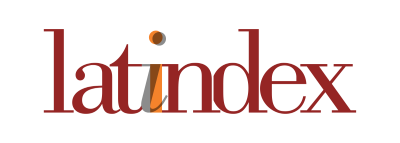Construction of a History of Japanese Medicine from the perspective of Yû Fujikawa and Tôyô Yamawaki
Keywords:
History of japanese medicine, Rampo, Kampo, Tôyô Yamawaki, Yû FujikawaAbstract
Japanese medicine has developed over centuries differentiating its characteristics, but maintaining its base associated with Chinese and Western medicine. During this period, the population's needs and social demands were internalized and adapted. This introductory study focuses on presenting notes on Japanese medicine, with the aim of identifying the influences of Yû Fujikawa and Tôyô Yamawaki and their works in the construction of the history of Japanese medicine, and how China and the Netherlands influenced medical studies in Japan. For that, we will use as a methodology, the bibliographical research, starting from primary and secondary sources, from materials of the time and studies on the works and authors of the researched periods. It was evidenced through the research that the Chinese practices that arrived in Japan enabled the development of new medical studies, later associating with Western Medicine, adding new studies in the area of anatomy. While Yû Fujikawa developed studies that contributed to the History of Japanese Medicine, being quite relevant even if little known outside Japan.
References
IZUMI, Yoshio; ISOZUMI, Kazuo. Modern Japanese medical history and the European influence. Disponível em: <https://www.jstage.jst.go.jp/article/kjm1952/50/2/50_2_91/_pdf/-char/en>. Acesso em: 18 dez.2020.
HIWAT, Frandra. Medicine in Edo Japan: Views from different angles on the history of Japanese medicine. 2016. Disponível em: <https://openaccess.leidenuniv.nl/bitstream/handle/1887/42652/MA60%20Hiwat%200801348%20July%2015th.pdf?sequence=1>. Acesso em: 06 nov.2020.
KLEINE, Christoph. Buddhist Monks as Healers in Early and Medieval Japan. Japanese Religions, Japan, v. 37, n. 1-2, 2015, p. 13-38. Disponível em: <https://www.researchgate.net/publication/284187272_Buddhist_Monks_as_Healers_in_Early_and_Medieval_Japan>. Acesso em: 26 dez.2020.
KOBAYASHI, Akiko; UEFUJI, Miwa; YASUMO, Washiro. History and Progress of Japanese Acupuncture. Disponível em: <https://www.researchgate.net/publication/23423101_History_and_Progress_of_Japanese_Acupuncture>. Acesso em: 23 dez.2020.
MESTLER, Gordon E. A Galaxy of Old Japanese Medical Books with Miscellaneous Notes on Early Medicine in Japan. 1954. Disponível em: <https://www.ncbi.nlm.nih.gov/pmc/articles/PMC199727/?page=1>. Acesso em: 06 out. 2020.
YU, F. et al. Traditional Chinese Medicine and Kampo: A Review from the Distant Past for the Future. The Journal of International Medical Research, online, v. 34, 2006, p.231-239. Disponivel em:<https://pubmed.ncbi.nlm.nih.gov/16866016/>. Acesso em: 26 dez. 2020.
WOLFGANG, Michel. 近代日本人体解剖的黎明. 中华医史杂志, Pequim, v. 50, 2020, p.75-82. Disponível em: <http://rs.yiigle.com/CN112155202002/1202145.htm>. Acesso em: 25 dez. 2020.
ZOFFOLI, Martina. Les germes du stimulus-diffusion au Japon. Disponível em: <https://www.academia.edu/17152061/Les_germes_du_stimulus_diffusion_au_Japon>. Acesso em: 25 dez. 2020.
Published
How to Cite
Issue
Section
License
Autores que publicam na Revista Faces da História concordam com a cessão dos direitos autorais dos manuscritos, processo simultaneamente licenciado sob a Licença Creative Commons Attribution (CC-BY-NC), que permite o compartilhamento do trabalho com reconhecimento da autoria e publicação inicial nesta revista. Dessa forma, a Revista Faces da História pode difundir os artigos e trabalhos publicados, em formatos físicos e/ou eletrônicos, incluindo Internet.




